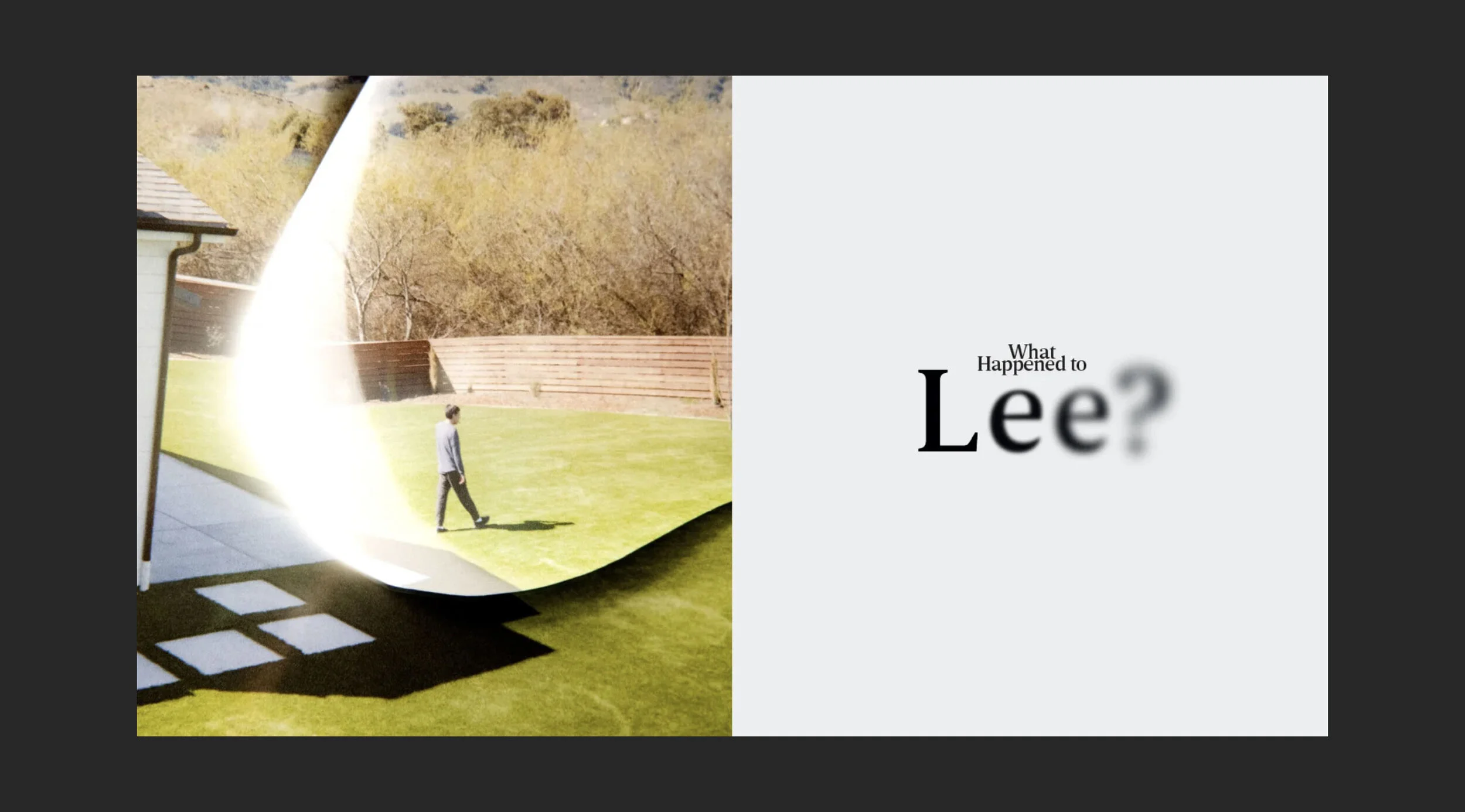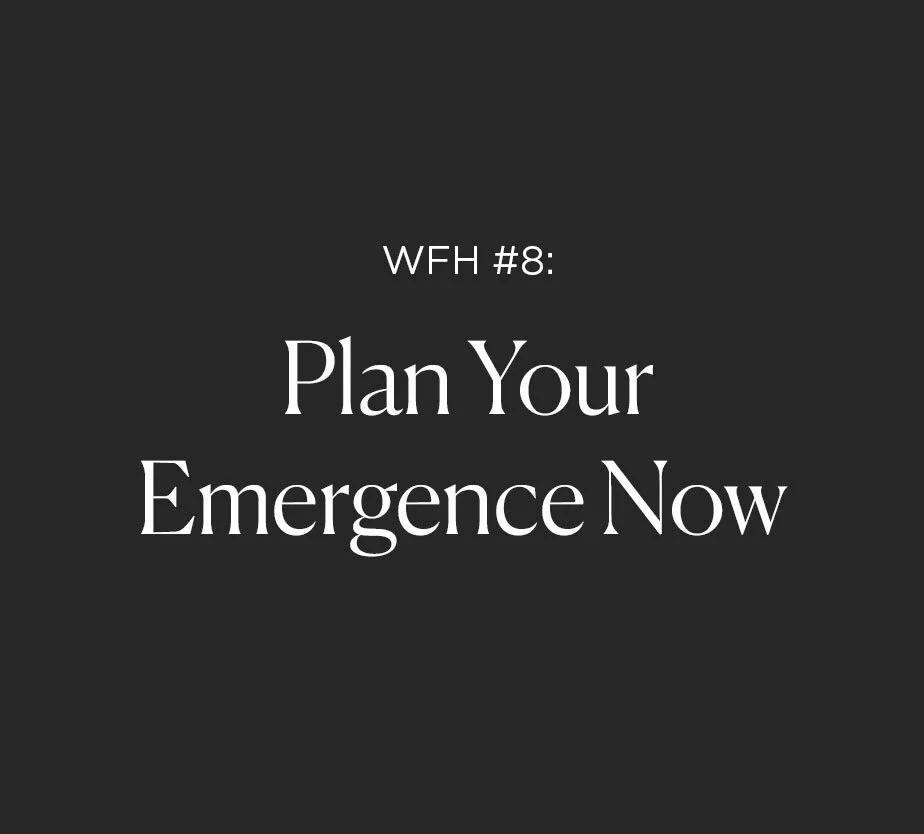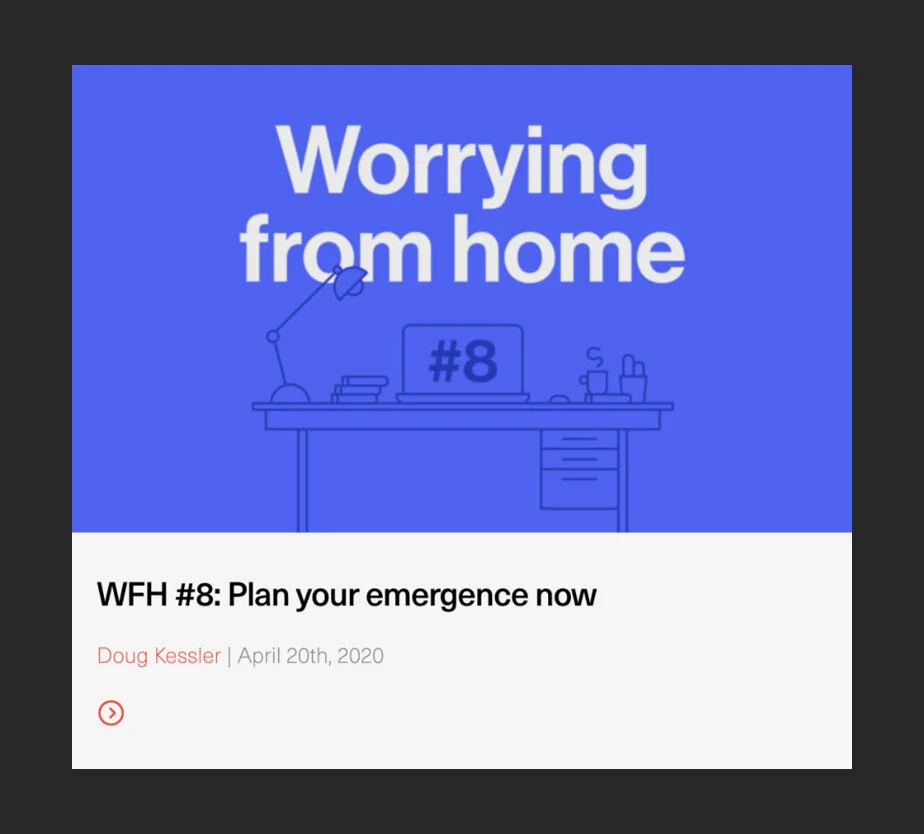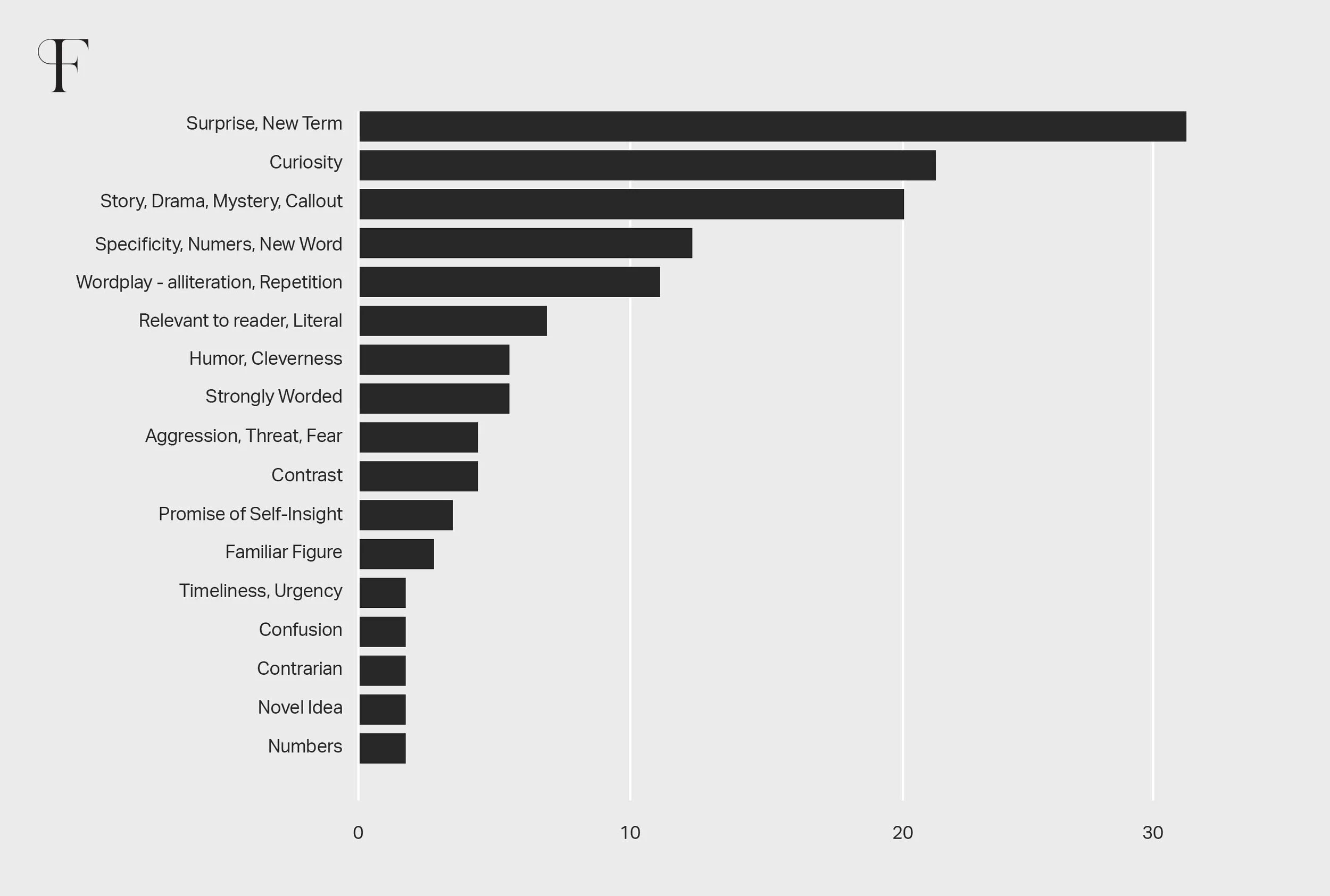
I once took Brazilian Jiu Jitsu classes in San Francisco with an instructor named Kurt. He was, as I recall him, unforgettably trollish—wild hair, broad nose, rock jaw, a laugh like a cement mixer, and a fountain of profanity. Kurt was popular then but he’s since become famous—not because of his looks or vulgarity—but because he gives the same response to almost every question. Whenever his students get wrapped into a pretzel, they shout, “Coach! How do I get out of this really complicated position?” Each time, he replies, “You f-cked up a long time ago.”
By this, Kurt means that if they had mastered the fundamentals he taught them, they wouldn’t have fallen into the trap. Their question is irrelevant. Don’t learn how to get out of the position, he was saying. Learn how to not get into it. I find it’s a similar story with writing headlines.
Each month, 852,000 people visit CoSchedule’s headline analyzer seeking magical insight. But if I could offer advice to those visitors, it would be Kurt’s catchphrase: You messed up a long time ago. Simply inserting '10% more emotional words' and '15% more strong words’ does not a powerful headline make. Actually, it may make it worse.
For the informal study I conducted to write this article, I found dozens of headlines that compelled me to click. But CoSchedule’s headline analyzer disdained most of them:
Fix, Marry, Kill: What Would You Do in These Three Marketing Scenarios? = 56%
Could a Study About 912 Million Blog Posts be Wrong? We Put it to the Test = 58%
Inbox Zero and Other Productivity Myths = 59%
I followed the analyzer’s advice for the first title, and after twenty minutes of effort, was only able to improve its score by shedding all grammatical convention:
Crazy, Bizarre, Kill: What Would You Do in These Three? = 75%
I also tried headlines from 2019’s most-read articles from publications like Wired and blogs like Think With Google. Despite their obvious success, none of these headlines scored higher than 62%.
Not only does CoSchedule not understand humor, wit, levity, puns, threats, innuendo, news relevance, or basic sentence structure, it’s easily spoofable. All it sees are keywords. It's not based on data from successful headlines (as far as I can tell). Nor does it judge headlines based on where they’ll be used or who will be reading them. It’s a static, unchanging algorithm invented to drive traffic to CoSchedule’s site.
Which is to say, it’s not real and there are no shortcuts. Headline writing is difficult, but it’s a fundamental skill you cannot skip. To write something banal and then run it through CoSchedule’s analyzer hoping for a quick fix is to cry, “Coach! What do I do?”
Like Kurt, the headline analyzer has predictable replies. Unlike Kurt, it’s rarely right. Death to analyzers. Long live human ingenuity. Now on to part two.
You know what makes a really interesting headline?
Let’s play a game. Tell me if you find this headline interesting:
What Our Leaders Can Do Now
Boring, no? Would you feel different if you knew it was written by Bill Gates at the height of the Covid-19 pandemic when over 100 countries shut their borders and the U.S. and China appeared ready to trade blows? I did. The author is the reason I clicked. Let’s try another.
A Privacy-Focused Vision for Social Networking
If by an author I’ve never heard of, uninteresting. But by Mark Zuckerberg at the height of yet another Facebook scandal? Interesting.
Market Update
By some fintech startup? Nah. But by the Chairman of the Federal Reserve while the country is headed into one of the worst financial crises in history? Yup.
Becoming
If by some pulp novelist, no thanks. But by Michelle Obama? You got me.
And so on.
What I'm trying to convey here is the idea that when you remove a headline from its container—the context that surrounds it such as the author, location, thumbnail, metadata, timing, and environment—it dies. Headlines are like animals too frail to survive captivity. This became clear to me when I sequestered 100 of them in a spreadsheet I revisited over the course of several months. Often, I’d find some of my most prized specimens had withered and no longer held any interest.
Take for instance, the article “The Devastating Decline of a Brilliant Young Coder” from Wired. Upon my first reading, I was enthralled. Upon my second, when I viewed it in the spreadsheet, I didn’t recognize it. It had been stripped of its font, styling, personality, and deliciously moody thumbnail.

This is how I realized that designing the perfect headline in a sterile laboratory as I had planned to do is impossible. It’s a crowded news world. There are many factors I can’t prepare for. Every site has a different design, and I can’t know how all the metadata will be positioned. So, I pivoted to first studying containers. A good container finishes your sentences—it’s that magical factor that turns good headlines into great ones.
What makes a good container?
A publication's “container” is its brand. Not the whole company’s brand, but a brand specific to that blog, page, or program.
A brand is what you’re known for—the personality of your business—and its primary purpose is to offer predictability. If I enjoy using Salesforce Marketing Cloud and I buy it again at my next company, I know exactly what I’m getting: the same support, interface, and benevolent CEO who funds good causes. When I see that cartoon dressed as a raccoon with a vacuous stare, I know exactly what to expect.
If you’re curious which companies have a brand and which ones don’t, ask yourself this: If they had a clothing line, what would it look like? (If they do sell clothing, then what kind of car would they make?) I know exactly what Apple’s clothing line would feel like—minimal, white, edgy, and smooth. I know Microsoft’s too—cargo pants with too many side pockets. Now let’s apply it to publications.
The Economist wears crisp Saville Row suits, for sure.
The Washington Post wears a suit too, but rumpled.
Buzzfeed, I’m fairly certain, wears a popped collar and a propeller beanie.
Content Marketing Institute wears an intentionally tacky orange suit. (No, but seriously.)
But when you apply this to most B2B publications and company blogs? Name one and try it. For the ones below, I drew a blank—even though I know the companies well.
Zoho?
Zapier?
Amazon Web Services?
Intel?
There’s no container. We don’t know what they stand for, so we can’t model how they might think. We don’t have any information to draw upon to finish their sentences. To feel the difference that makes, consider which of these two grabs you more:
What good design means - Allianz
What good design means - Apple
The author is a part of the container, too. They could be the entire container. If your marketing person has built a brand for themselves the way individuals like Jay Baer or Dave Gerhardt have, they can make otherwise banal headlines clickable. But the vast majority of authors are unknowns, even to people within their industry, in which case, their titles may achieve the same effect. Who cares if Lorraine Twohill is giving a talk? I do, but only once I know that she’s the chief marketing officer of Google.


The value of the container is in the eye of the beholder. It is entirely relative. My parents don’t know who Doug Kessler of Velocity Partners is, and likely wouldn’t leap to click on his articles as I would. Similarly, when I visited the coder news site Hacker News, the number one post was “Project Svalbard, Have I Been Pwned and its Ongoing Independence” and I was flummoxed. It earned 700 upvotes. I explored it for ten minutes and still don’t get it.
All you have to do to watch a headline crumble is move it to a new container. Imagine the dismal results “A New Go API for Protocol Buffers” would see on Cleanetto’s blog for house cleaners.
The fact that so few B2B companies have a clear brand presents a massive opportunity for you to stand out. And when branding works well, it is tremendously powerful. “Consistency builds trust. It creates ties of belonging,” says Eve Lewis, Chief Strategy Officer at Fenwick. “It allows things to naturally align; when you’re being truthful about who you are, the people who resonate with you will feel that. You won’t have to work as hard because it’s not something you're crafting. It’s something that just exists. Sticking to your truth builds trust.”
If you buy into the idea that containers are what make headlines great, here’s the heart-wrenching news. If you are truly, truly serious about writing great headlines, you have to build yourself a container. Yes, I do realize this is akin to telling someone who’s hungry to start a bakery. It is no small feat. It is categorically the hardest thing you can do, but it is the most effective in the long run. Branding is a whole team effort—a whole company effort. But once established, it amplifies all you do for as long as you maintain it.
Take the MICHELIN Guide to restaurants and its iconic star rating system. It was devised as a scheme for selling tires back in 1900. They provided roadmaps and guides on where to dine to inspire drivers to drive more often. Your publication is a similar guide for readers. When you’re that clear about your purpose, and what you offer is exactly what people need, you can become an institution.
How to build a container
- Decide what you are promising your audience
- Write a vision and mission statement—what do you stand for? How will you achieve it? Who is this for?
- Write a vision and mission statement—what do you stand for? How will you achieve it? Who is this for?
- Alter your publication site to make the position clear
- If needed, rename your publication to fit that vision
- Add one-sentence tagline that summarizes the mission and links to it
- Add author titles, bios, thumbnails, and metadata
- (See Fenwick’s blog, Marginalia)
- Devise and uphold strict editorial standards
- Develop a mini style guide (collect all things unique to your brand so others can mimic it)
- Manage a content backlog and accept only on-brand stories
- Edit ruthlessly to ensure consistency
- Defend the brand
- Decline off-brand stories, partnerships, channels
- (See Fenwick’s blog, Marginalia. It’s fairly consistent on topics)
If you do all of this, people can get to know you. When the right person stumbles across your article in their news feed, they’ll recognize it as helpful or enjoyable or relevant and think, “Hey that was good.” By the second interaction, they’ll think, “I know where to go for this stuff in the future.” And in subsequent interactions, they see your headline and instead of seeing just the text, they associate all sorts of extra meaning to it.

As a black belt move, you can also build containers within containers. That’s what an article series is—a brand within a brand. Consider Velocity Partners’ series, “Let’s Steal From” where they borrow ideas from a grab bag of concepts that range from seventeenth-century explorers to Google Cardboard. If you read their blog and see an article that begins with that convention, you know what you’re getting. And if the last one you read was clever, you’ll click on the next one expecting the same.
Examples of strongly branded B2B series:
- Slack on Slack
- Plaid People
- Inside Drift
- Mixpanel Metrics that Matter
- Amperity Personalization Tip of the Week
Writers contributing to another publication, you aren’t out of luck. You have your own container—you. Your writing style, the topics you choose, and the ideas you offer are your brand. When building your writerly container, pitch on-brand stories to on-brand publications.
Let’s recap containers. Containers have immense power and can finish your sentences. They’re made up of a combination of the article’s author, the thumbnail, the publisher, and a mixture of reader-specific factors—like whether they’re in your industry or have heard of you.
Containers are the most important factor in writing a title that gets clicked. And if you find yourself instead scrambling to input more ’strong’ words using CoSchedule’s headline analyzer, just consider—it’s possible that you messed up a long time ago.

B2B BLOGS THAT HAVE STRONG CONTAINERS
- A little more human (Typeform)
- Content Strategist (Contently)
- The Signal (Mixpanel)
- Drift blog
- Sales Hacker
- Shopify’s blog
- The Velocity B2B Content Marketing Blog (Velocity Partners)
- CMO (Adobe)
- Content Marketing Institute’s blog
- Relate by Zendesk
Finally, how to write a headline
All that said, there is still an art to writing good titles. We’ll cover that now. To write this section, I had conversations with four brilliant people: Kim Moutsos, VP of Editorial at CMI, Lisa Dougherty, Director of Blog Operations and Community at CMI, Andy Crestodina, CMO and Founder of Orbit Media, and Suzanne Barnecut, Editor of Zendesk Relate.
If the process below strikes you as almost entirely reliant on human judgement, sorry. Surprise. It is. Unlike CoSchedule’s headline analyzer, we can’t yet reduce humor, wit, levity, puns, threats, innuendo, and news relevance to an algorithm. As Kim explained, their most inspired headlines come from smart people. "Lisa, our blog editor, has been working on the headlines for a long time so she has a gut instinct. She just knows.”
This section is a guide to learning how to just know.
1. First, write a substantive article
Back to Brazilian Jiu Jitsu, the difficult thing is nailing the basics. But it’s the most effective approach. Interesting articles beget interesting headlines. What unites the examples below is that a lot of work went into the writing which then allowed the authors to make impressive and click-worthy claims:
- Could a study about 912 million blog posts be wrong? We put it to the test - CMI
- Here (with 2 Years of Exhausting Photographic Detail) Is How To Write A Book - Medium
- How Long Does It Take for Content Marketing to Work? A Case Study - Grow and Convert
2. Have someone else write the headline
We’ve tried this at Fenwick and found that the writer is often too close to their work to write the best headline. A disinterested observer (also skilled in writing) often has an easier time, for example, your editor.
And anyway, writers can become married to their original headline even if it’s no longer relevant. “Articles often change between pitch and publication,” says Suzanne. “The interview changes it, the editing changes it; I find that it's best to brainstorm multiple headlines at the end of the process.”
3. Write down your goal
Headline quality is relative to the goal. Are you a resource library or a news site? If it’s a news site, short, pithy, and full of intrigue is best. If it’s a library, maybe a long, dull but SEO-friendly semantic keyword title like “How to Write the Perfect Headline” is best.
Example library goal: Rank on Google Search for “conversational”
Example news goal: Get shared
4. Write down the channel(s)
“Everything depends on the channel,” says Andy Crestodina of Orbit Media, who has also conducted a study on writing headlines. Direct answers to questions work better in search whereas surprising or emotionally evocative titles work better on social media.
Example channels: Website, LinkedIn, Instagram
5. Write down the reader’s goal
Theory of mind, or getting inside the head of your reader, is one of the most important skills marketers can learn. I’m aware of no better way to develop this than to talk to lots of readers.
Example reader goal: “I need to find a bulleted list that tells me what to do.”
Example reader goal: “I want to find a stat I can share on Twitter.”
6. Review this list of guidelines
Suzanne finds that constraints breed creativity. Just the act of trying to follow a character or word limit forces her contributors to be more inventive. You can’t follow them all, but you can follow one or two if they jump out at you.
Guidelines:
- Front-load information. If it’s important, put it first.
- Promise something. Secrets, ideas, reasons, facts. (Not tips. Tips are lame.)
- If you promise something, deliver on it. Clickbait only works once.
- Describe the object of interest but don’t give it away. E.g. “Unmasking a Company That Wants to Unmask Us All.” Also called the suitcase method.
- Ask a question. E.g. “How Trustworthy is Your Online Store?”
- Tell a story. E.g. “They Shared a Bunk Bed Growing Up. Both Were Killed by the Police.”
- Literal beats clever. "What we’ve found is that the clearer the headline, the better,” says Kim Moutsos, VP of Editorial at the Content Marketing Institute. “The thing we try that sounds clever because it impresses our writers almost never works.” It’s the same for Suzanne Barnecut of Zendesk Relate: “We’ve tested clever copy versus straightforward copy in our newsletter and straightforward is better.”
- Be specific. It’s better to thrill some readers than to bore all.
- Be brief. “Brevity forces you to be extra clear,” says Suzanne.
- Convey a sense of urgency. Now. Ending. Limited.
- Use:
- Digits—“4” rather than “four.”
- Unusual adjectives—Dopey. Resplendent. Asinine.
- Emotional adjectives—Thrilling. Triumphant. Clashy.
- Judgmental adjectives—Churlish. Shrewd. Haughty.
- An enticing quote—'There's No Room We Shouldn't Be In': Reuters CMO on Evolving the 168-Year-Old Newswire.'
There’s probably also something to be said about the feelings headlines should convey, though I don’t have enough data yet. In my informal study of 100 headlines, I noted what interested me in each and created a histogram, below. This may be less of a reflection of the general populace than my own psychology, but surprise, curiosity, drama, and candor dominate.
what factors make headlines clickable?

7. Write 15 variants of your title
Now the work. Begin writing and don’t stop—doesn’t matter how bad. The more you write, the less you’ll self-censor, and you can enter a state of free flow. Revisit the list over multiple days, each time, deleting some and reordering them from best to worst. By the end, you should have at least six headlines left.
(Note: This was originally 25, but I found it exhausting and rarely got that far.)
8. From the remainder, pick a finalist
Sometimes, if I’m really torn, I’ll send several options to writers in my network and ask for their vote. Another person’s unbiased take can help you pick the best. Don’t toss out the rest, however. As our own Carina Rampelt points out, they can make for wonderful titles for social posts.
9. Gut check that the article still delivers on the headline’s promise
“The headline is a promise,” says Andy Crestodina of Orbit Media. “You don’t often get a redo. That’s why clickbait is destructive—it sullies the brand.” Kim and Lisa echoed this advice: "The most important thing is that the article delivers on what your headline promises,” says Lisa. “After I finish reading the article, I always go back and make sure it delivers or our audience will call us out.”
10. Test the subject lines
Andy recommends testing subject lines with your various channels. “In email, where you can’t un-send, we stress about getting it right,” says Andy. “But for a social post? It’s a low-stakes, high-data environment where you can repost the same thing under different headlines. Same with your blog: Digital ink is never dry and you can always revisit.”
If your audience is large enough, AB test the subject lines with the goal of building knowledge. This point is key: If you simply put two subject lines up against each other, you learn nothing. If you develop a hypothesis like “shorter is better” and then record that data over time, you develop guidelines for what works for your audience.
A critical note: When measuring headline performance for articles or downloadable assets, take any promotion you did into account. “A mistake I’ve often seen marketers make is that they’ll judge content performance based on views or downloads, without considering how much promotion each piece received. If you spent heavily to promote an eBook on LinkedIn and you compare it to another eBook that's collecting dust on page four of your resource library, it’s not a fair fight. It’d be illogical to conclude that the former was inherently a better piece of content,” says Riviera Lev-Aviv, Writer & Strategist at Fenwick.
Test:
- Short versus long
- Literal versus clever
- Emoji or no emoji
- Question versus statement
- Quote versus statement
- Series or no series
11. Note where your subject lines came from
As our Chief Strategy Officer Eve Lewis says, “The greatest ideas come from interdisciplinary thinking. You have to look outside your field for inspiration.” Great titles can come from reading poems (I wrote an ebook for a client called “IT All Falls Apart,” an allusion to a Yeats poem) or movies (I wrote “Marketing Through an Information Apocalypse” which was inspired by the film Mad Max Fury Road.) Pick out patterns. Perhaps reading poetry or watching movies should be part of your brainstorming.
That sums up the best of our advice. Read a lot. Write a lot. Try a lot of headlines, test with your own audience, and continue to revisit this list.
And this is so you remember
Let’s return to Kurt’s Brazilian Jiu Jitsu gym in San Francisco, where in the spring of 2010, I cracked one of my ribs. It was not a glamorous fight—just me and a tender novice jazzed-up on martial arts videos who got way too excited and fell on me with his knee.
It’s made the lessons I learned from Kurt unforgettable because after the fracture, the rib became delicate and prone to re-breaking. Once, a visiting friend surprised me with a bear hug and I yelled, crumpled, and spent the night in a hotel moaning before I could see a doctor. Every few years the injury recurs, and yet every few years, I heal and return to the sport with Kurt’s message seared ever more firmly fixed in my mind. Though after a decade, it has gathered new meaning.
Master the fundamentals, certainly. But also, push yourself beyond what’s comfortable. Painful mistakes are what make those lessons unforgettable. It is the same for writing headlines.
It can be tempting to write whatever title comes to mind and then run to a headline analyzer for help. But that’s how your headline gets lost in a sea of sameness. Instead, take the time and study the fundamentals so you learn to do it yourself, and build a container that does most of the work for you. It’s the hardest way, but it’s also the best.
to recap
- Build a container
- Write on topics of substance
- Write 15 versions
- Follow the guidelines
- Test
Further reading:
See Brazilian Jiu Jitsu coach Kurt Osiander in action
